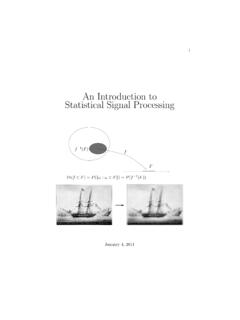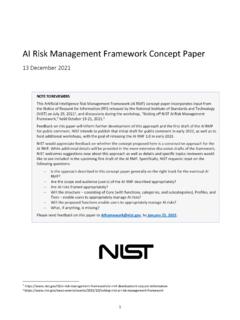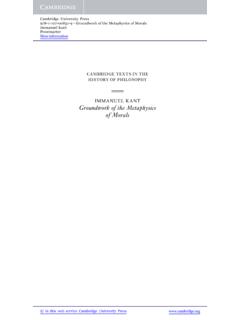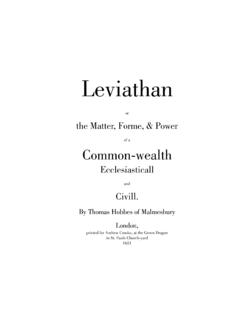Transcription of Restorative Justice in U.S. Schools
1 Restorative Justice in Schools An Updated Research Review Trevor Fronius Sean Darling-Hammond Hannah Persson Sarah Guckenburg Nancy Hurley Anthony Petrosino March 2019. The WestEd Justice & Prevention Research Center highlights the rigorous research and evaluation work that WestEd researchers are conducting in the areas of school safety, violence and crime prevention, juvenile and criminal Justice , and public health. A primary goal of the Center is to become a trusted source of evidence on the effects of policies and programs in these areas. For more information, visit WestEd a nonpartisan, nonprofit research, development, and service agency works with education and other communities throughout the United States and abroad to promote excellence, achieve equity, and improve learning for children, youth, and adults.
2 WestEd has more than a dozen offices nationwide, from Massachusetts, Vermont, Georgia, and Washington, DC, to Arizona and California, with headquarters in San Francisco. For more information about WestEd, visit ; call or, toll-free, (877) 4-WestEd; or write: WestEd / 730 Harrison Street / San Francisco, CA 94107-1242. 2019 WestEd. All rights reserved. Restorative Justice in Schools : An Updated Research Review Contents Acknowledgments iii Background iii An Overview of Restorative Justice 1. The literature on Restorative Justice 3. Origins and Theory Underlying Restorative Justice in Schools 5. Restorative Justice 's pre-modern origins and theoretical frameworks 5. Restorative Justice 's origins in juvenile Justice 7. Restorative Justice 's origins in nations 7. An Overview of Restorative Justice in Schools 9.
3 Implementation Steps for Schools and Educators to Consider 12. Funding a Restorative Justice program 12. Preparing for Restorative Justice : Culture, community-building, and staff training 12. Sustaining Restorative Justice : Integration, buy-in, and patience 14. Bullying and Discipline Disparities 16. Bullying 17. Racial disparities 18. Research on Restorative Justice 's Impact in Schools 21. Impact on student misbehavior and school discipline 24. Impact on attendance and absenteeism 29. i Restorative Justice in Schools : An Updated Research Review Impact on school climate and safety 30. Impact on academic outcomes 31. Access to Restorative Justice 32. Limitations of the Literature Review 33. Limited sample 33. Limited causal research 33. Small sample sizes 34. Implementation challenges 34.
4 Conclusion 35. References 37. Appendix: Glossary of Restorative Justice Terms 46. List of Tables Table 1. Restorative Justice Implementation Guides and Toolkits 15. Table 2. Summary of Studies on Restorative Justice and School Discipline 28. ii Restorative Justice in Schools : An Updated Research Review Acknowledgments The authors thank The Robert Wood Johnson Foundation for funding this project, and for the assistance of our program officers during the project's tenure, Drs. Brenda Henry, Kerry Ann McGeary, and Tracy Costigan. We thank Elizabeth Burr for her work during the early stages of this review. We thank Susan Mundry of WestEd for her support and for contributing in-kind resources to support the completion of the project and the 2016 publication. We also thank Thomas Hanson of WestEd for supporting this update.
5 We also thank Fredrika Baer and Rosemary De La Torre for their assistance or comments on the 2016 version, and finally we thank Noel White for his contributions to both iterations of this report. Background This updated report is part of a larger effort of the WestEd Justice & Prevention Research Center (JPRC). focusing on Restorative Justice (RJ) as an alternative to traditional responses to student misbehavior in Schools across the United States. This project was funded to document the current breadth of evidence on the subject, provide a more comprehensive picture of how RJ practices are implemented in Schools , and lay the groundwork for future research, implementation, and policy. The Robert Wood Johnson Foundation (RWJF) funded WestEd beginning in 2013 to conduct this research to better understand the national landscape, as a large number of American Schools were enacting RJ.
6 The JPRC's work on this project has included conducting a comprehensive review of the literature (the subject of this report, first published in early 2016, and updated here), interviewing experts in the field of RJ (people who are nationally recognized for their work on RJ in Schools ), and administering a survey to and/or conducting interviews with RJ practitioners currently working with or in Schools . For more information, please see these related project reports, available from the JPRC website: Restorative Justice in Schools : Summary Findings from Interviews with Experts Restorative Justice in Schools : Practitioners' Perspectives What Further Research is Needed on Restorative Justice in Schools ? iii Restorative Justice in Schools : An Updated Research Review An Overview of Restorative Justice This report presents information garnered from a comprehensive review of the literature on Restorative justice1 in Schools .
7 The purpose of our review is to capture key issues, describe models of Restorative Justice , and summarize results from studies conducted in the field. We first conducted and published a literature review on this topic in early 2016, covering research reports and other relevant literature that had been published or made publicly available between 1999 and mid-2014 (Fronius, Persson, Guckenburg, Hurley, & Petrosino, 2016). This report expands on that earlier review, updating it to include publications available through July Restorative Justice (RJ) is a broad term that encompasses a growing social movement to institutionalize non-punitive, relationship-centered approaches for avoiding and addressing harm, responding to violations of legal and human rights, and collaboratively solving problems.
8 RJ has been used extensively both as a means to divert people from traditional Justice systems and as a program for convicted offenders already supervised by the adult or juvenile Justice system. In the school setting, RJ often serves as an alternative to traditional discipline, particularly exclusionary disciplinary actions such as suspension or expulsion. RJ proponents often turn to Restorative practices out of concern that exclusionary disciplinary actions may be associated with harmful consequences for children ( , Losen, 2014). More recently, it has also been embraced as a preventative intervention for building an interconnected school community and healthy school climate in which punishable transgressions are less common ( , Brown, 2017). Within school settings, RJ encompasses many different program types.
9 An RJ program can involve the whole school, including universal training of staff and students in RJ principles, or it can be used as an add-on to existing discipline approaches and philosophies. It also has been combined with other non- 1 We use the term Restorative Justice ( RJ ) broadly to capture what the literature describes using a variety of terms such as Restorative practices, Restorative approaches, and similar language. 2 We also include a report from Augustine and colleagues (2018) that was published after July 2018 because it is based on very rigorous methods and came to our attention during the editing phase of this review. 1. Restorative Justice in Schools : An Updated Research Review punitive discipline approaches, such as Social and Emotional Learning and Positive Behavioral Interventions and Supports.
10 Given such mixed implementation approaches, it is not easy to define exactly what constitutes RJ in Schools . Sellman, Cremin, and McCluskey (2014) argue that from a theoretical perspective, RJ is essentially a contested concept and it is unlikely that there will ever be one agreed definition. The National Centre for Restorative Approaches in Youth Settings defines RJ as: .. an innovative approach to offending and inappropriate behavior which puts repairing harm done to relationships and people over and above the need for assigning blame and dispensing punishment. A Restorative approach in a school shifts the emphasis from managing behavior to focusing on the building, nurturing and repairing of relationships. (Hopkins, 2003, p. 3). Given the ambiguity in this and other definitions, it is not surprising that many different types of programs are classified as RJ even interventions such as student conflict resolution programs and student youth courts that some Schools have been doing for years, since before the term Restorative Justice came into currency.















